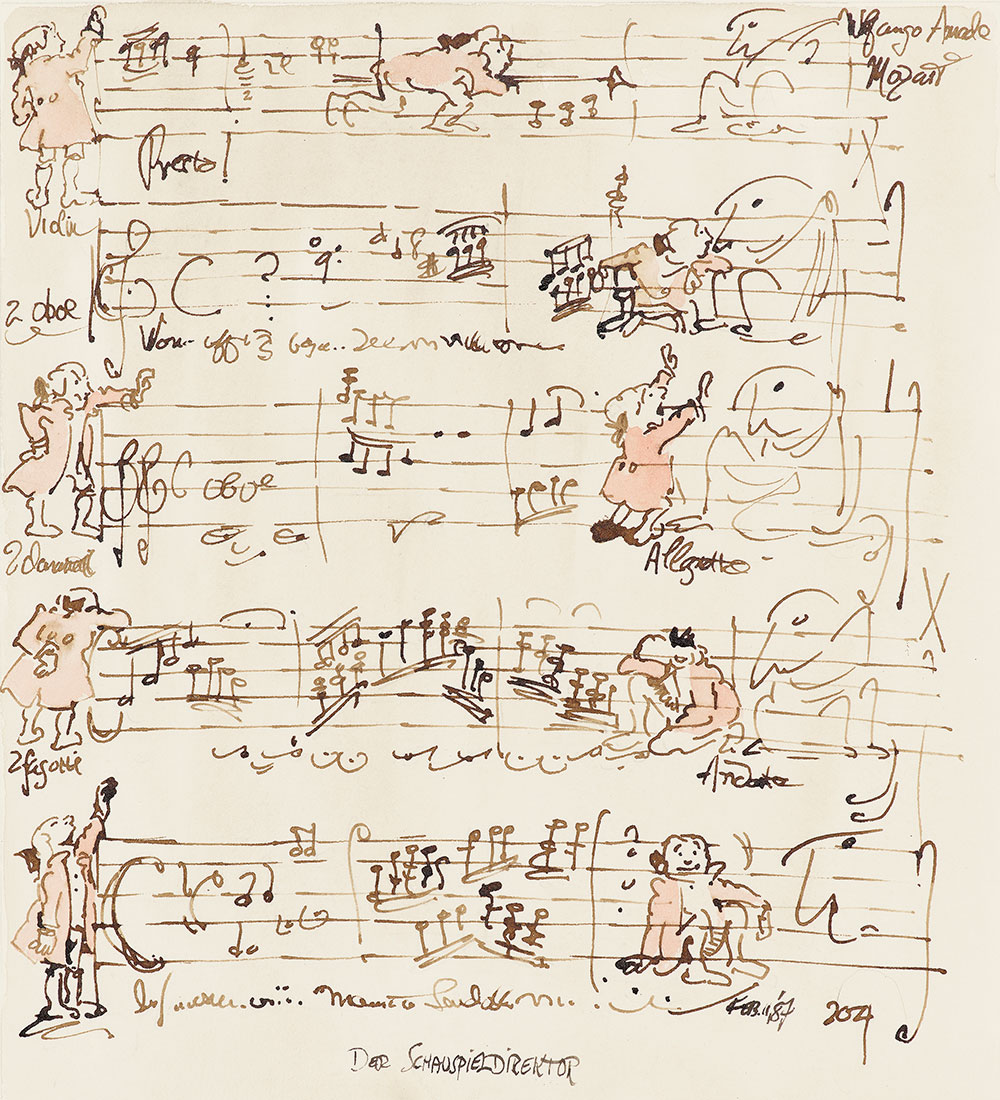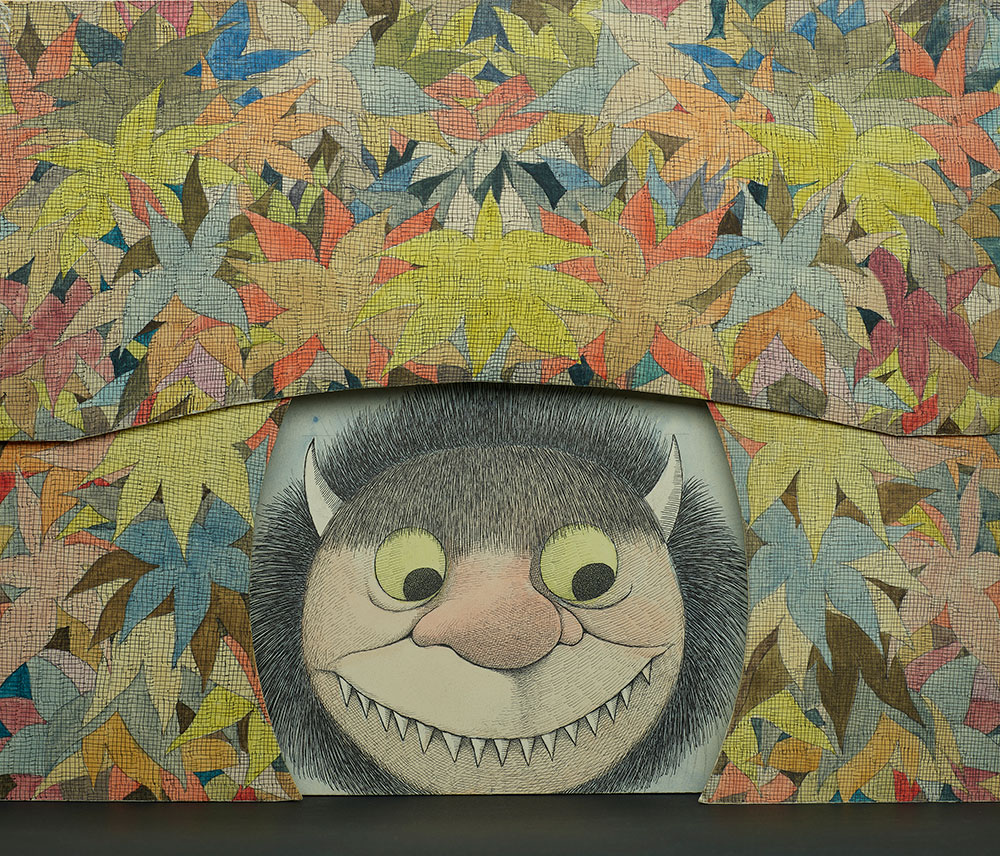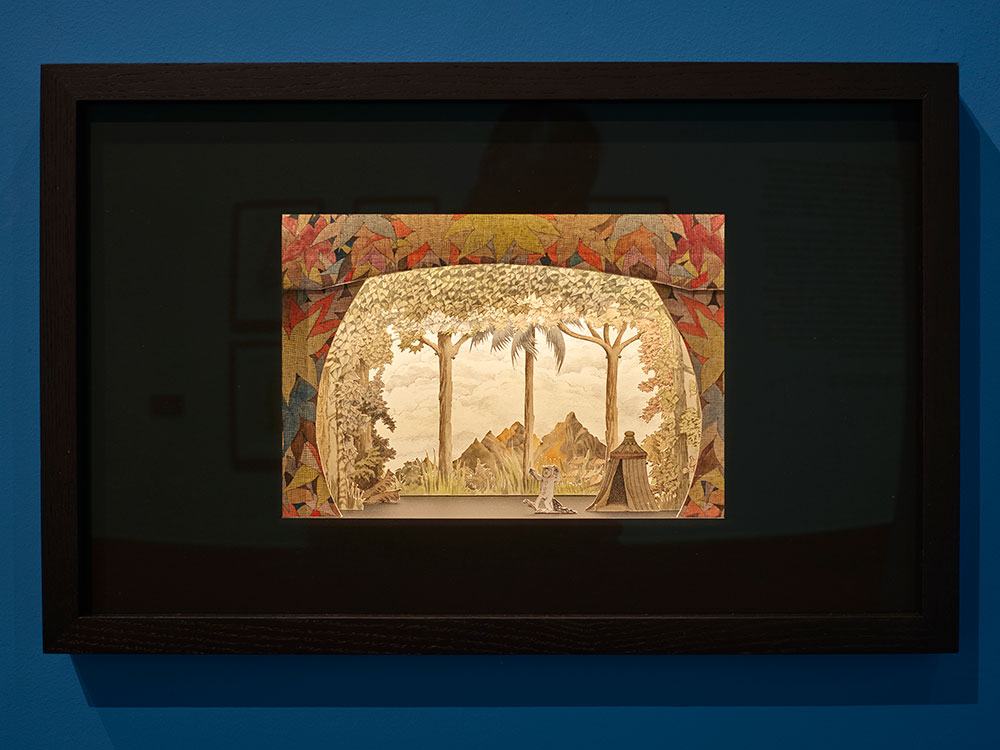Maurice Sendak was responding to fan mail one day when one letter in particular caught his eye. He lingered over a drawing his young correspondent had scrawled on it, so Sendak put a drawing on his letter in return.
"I drew a picture of a Wild Thing on it," he said later. "I wrote, 'Dear Jim: I loved your card.' Then I got a letter back from his mother and she said, 'Jim loved your card so much he ate it.'"
"That to me was one of the highest compliments I've ever received," Sendak said. "He didn't care that it was an original Maurice Sendak drawing or anything. He saw it, he loved it, he ate it."
Sendak is the beloved author and illustrator of such children's classics as Where the Wild Things Are and Little Bear. And from now through October 6, "Drawing the Curtain: Maurice Sendak's Designs for Opera and Ballet" at New York's Morgan Library and Museum will display another side of the author. Delightful dioramas and charming costume designs will show visitors Sendak's unique approach to theatrical storytelling and his boundless, bizarre creativity.
No eating in the exhibit, however.
Sendak (1928-2012) was born to Polish Jewish immigrants in Brooklyn. He did not go to college, but became an amateur art and music historian. He began writing stories at 19; he was 50 when opera director Frank Corsaro invited him to design sets and costumes for a production of The Magic Flute. "Fifty," Sendak said, "is a good time to either change career or have a nervous breakdown."
From 1978 through the mid '80s, Sendak designed costumes and sets for several operas, sometimes working on many at the same time. The Morgan presents his work for The Magic Flute, The Love for Three Oranges, The Cunning Little Vixen, Nutcracker, and the opera adaptation of Where The Wild Things Are. Each production carried a thematic juxtaposition of light and dark, a dichotomy Sendak was happy to deliver with masterful sets and costumes.
When another director, Kent Stowell, asked him to design a new Nutcracker, Sendak decided the ballet was due for a remix. He called it a "throbbing, sexually alert story." The protagonist Clara was made into a girl of 12 who then evolves into a grown woman after she rescues the Nutcracker. The stage curtain he designed for The Nutcracker is unsettling: a large, grinning nutcracker face with bulging eyes. Sendak said it was an accurate self-portrait.
He was unlike other theater designers. Alone among his colleagues in the field, he insisted on making story boards—the consecutive images that plot out the opera's storyline. We are lucky that he did: All the momentous scenes of the opera—be it Magic Flute or Three Oranges—are portrayed like a comic book page with tiny drawings glowing with watercolor. "I have found that telling a story by means of related, sequential pictures allows me to 'compose' with assurance and freedom," Sendak said.
These storyboards were usually inspired by Mozart's "fantasy sketches"—which are essentially wordless comics or images inspired by music—that the Morgan also hangs in the show. (Sendak nearly worshipped Mozart. "I know that if there's a purpose for life," he said, "it was for me to hear Mozart.") Mozart and Sendak had a similar style of drawing: deliberate yet whimsical, cartoonish yet acerbic. But Sendak appeared to always need outside inspiration: His curtain designs for The Love for Three Oranges are taken directly from Giovanni Domenico Tiepolo’s illustrations of Punchinello, and for The Magic Flute, he drew from William Blake's luminous watercolors.

But for the opera adaptation of Where the Wild Things Are, Sendak had the opportunity to look at his own work in a new light. His set designs are brought to life in meticulous dioramas. The stage is flushed with his crosshatched, jewel-tone palm leaves, under which the anti-hero Max tromps around in his white monster costume.
"Eyes must move!" he wrote on one design for the costumers that showed how Sendak hoped it would work. Each costume weighed up to 150 pounds and was enacted by three people: the puppeteer in the costume, an offstage actor who would provide the voice, and an offstage engineer who would control the movement of the eyes.

Although visitors will be drawn by familiarity to Where the Wild Things Are, the most moving pieces in the show were made for The Cunning Little Vixen, an opera from the 1920s by Leoš Janáček. Sendak was reluctant to design for this opera—he was not familiar with the work, and he was undergoing a small mental breakdown. The story itself was also depressing: A fox, who was taken by a forester, escapes, marries another fox, has cubs, and then is killed.
But in the end, Sendak was able to add his usual watermark of whimsy and comedy to the production: His designs for the costumes charm with warm earthy colors, and the many sketches or doodles of the characters in action illustrate their spunky attitudes. The setting for the forester’s house are bright and Disney-like in their cartoonish form, while the forests are dark but far from frightening.
"I fell in love with [The Cunning Little Vixen] after it opened," he wrote in his journal. "The opera is touching, sweet, and sometimes I cry.… It’s a very important opera to me now."
Sendak took a risk when he agreed to work on operas. He had been working mostly alone for decades, and now he was working with whole theater companies. Some may wonder why he undertook such a change: His legacy was already concrete; he was already raking in cash. But Sendak’s decision reveals his personality outside of his art: He was adventurous; he was ready to explore a new field filled with one of his greatest loves—music.
Fifty, the Morgan's exhibit shows us, was indeed a good time to "change career."

